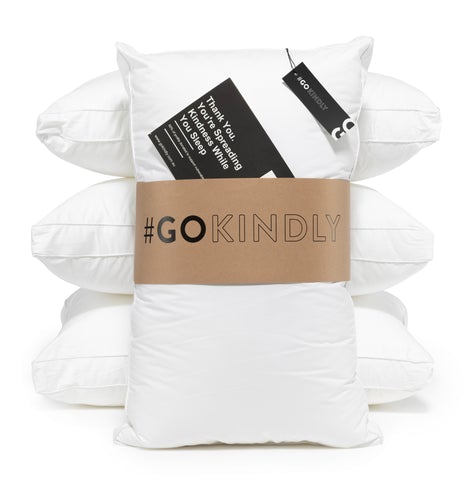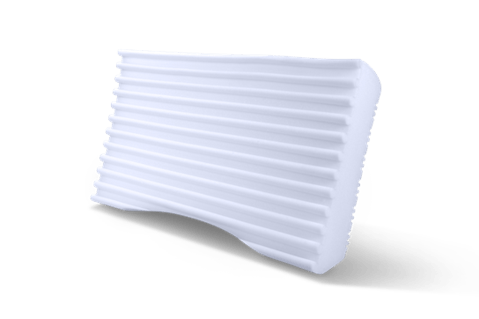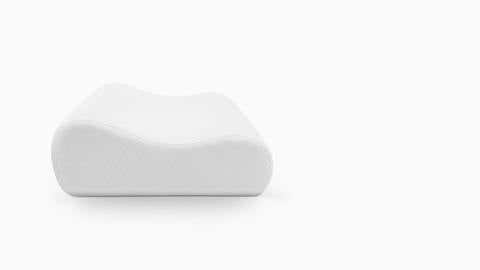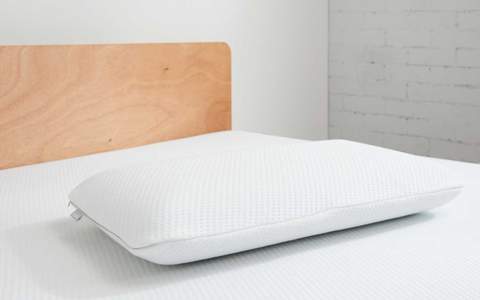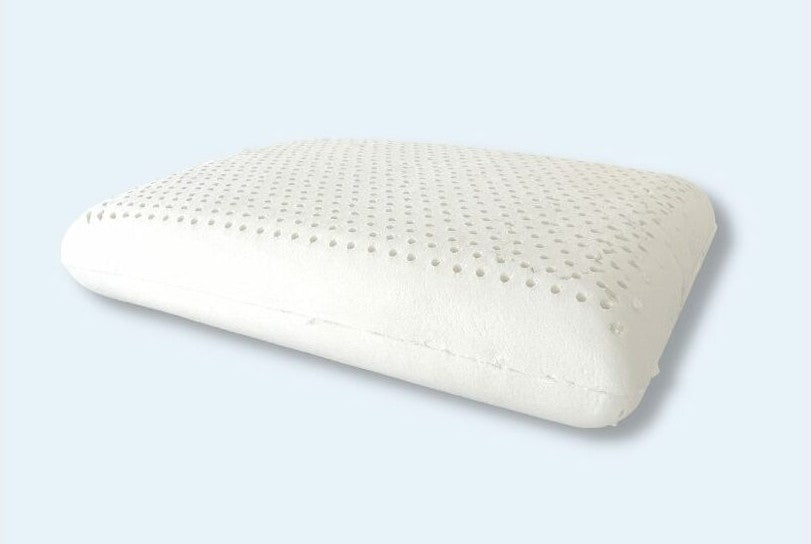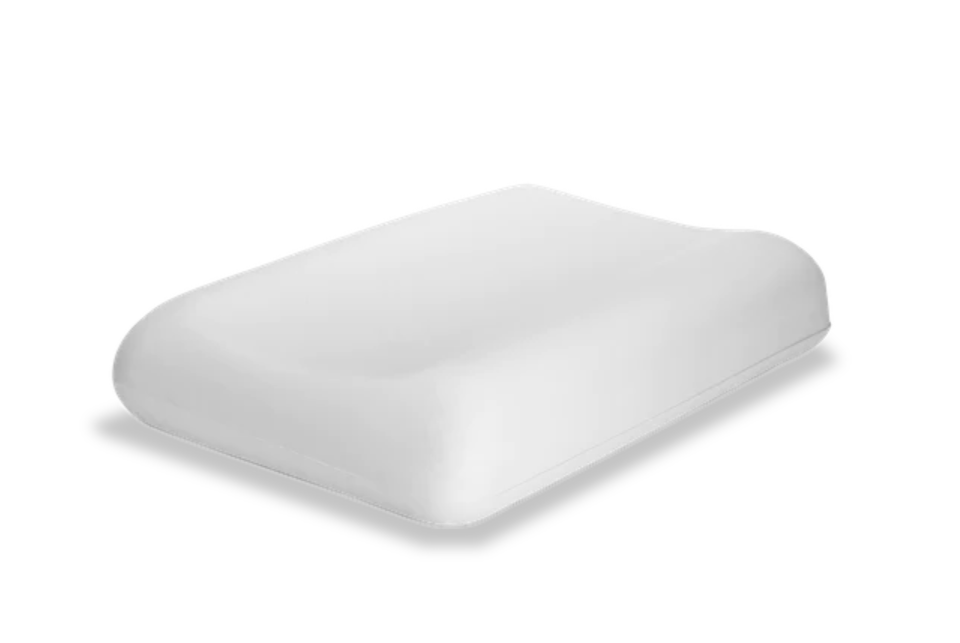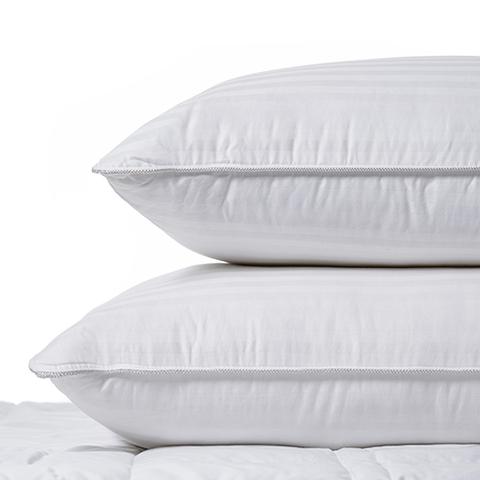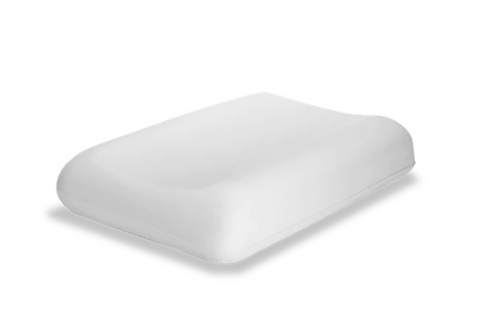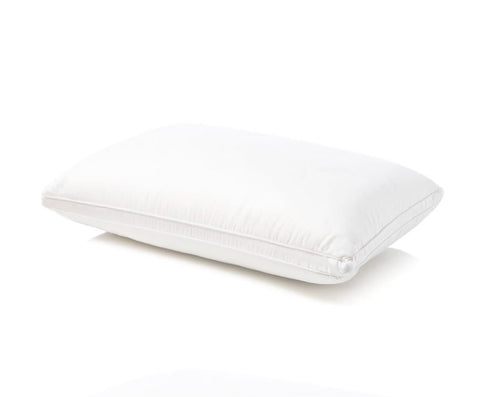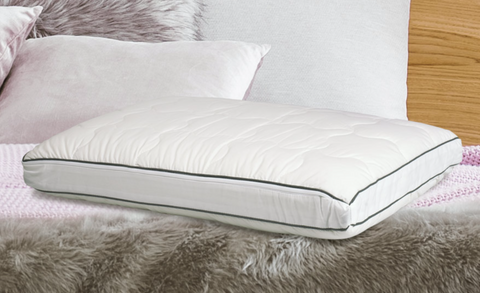Best Pillows in Australia: Top 10 (2025 reviews)
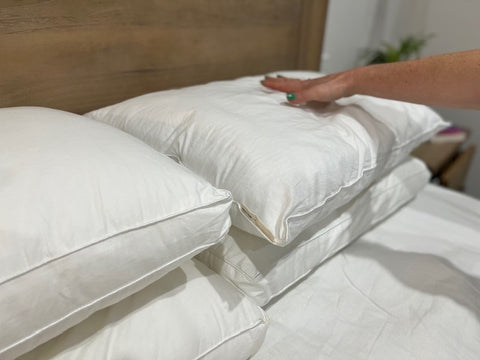
Looking for the best pillows in Australia? We know that there are many pillow brands and types such as: Memory Foam, Feather, Polyester, and Latex. So we have a list to help you find the right pillow for you to improve the quality of your sleep.
A comfortable pillow needs to conform to the contour of your neck and head, otherwise you may experience shoulder and neck pains. Your sleep style and height are key considerations when choosing the right pillow. We review pillows for all sleep positions including side sleepers, back sleepers, tummy and combination sleepers.
Based on our sleep research, we have found that 80% of people will require a medium to high profile pillow. This is due to the majority of people being side sleepers or combination sleepers, and needing a more supportive pillow. Also, most people will need a breathable pillow to provide the optimal sleep temperature.
Australian based research found that latex was the best pillow material based on reducing headaches and other waking symptoms. Feather pillows performed the worst for support.
Generally you should replace your pillow every 1 to 2 years for hygiene reasons and to ensure it provides you with the right support. To help you choose the perfect pillow, we have outlined some helpful tips including ranking pillow materials for durability, firmness and loft.
Here is our review of the best pillows in Australia for 2025.
Australia's Top 10 Pillows
- Best Value: #GoKindly Signature Pillow
- Best for Neck Pain: Spinaleze
- Best Memory Foam (Design): Koala pillow
- Best Memory Foam (Side Sleeper): Ecosa pillow
- Best Foam Pillow (Low Profile): Dentons
- Best Soft Pillow: Downtime down pillow
- Best Latex: Dunlopillo Latex
- Best Wool Pillow: Minijumbuk Breathe
- Best for Hot Sleepers: Tontine ComfortTech
- Best Firm Pillow: Herrington adjust for you pillow
The Breathe Wool pillow is designed for to give you a natural comfort by using 100% Australian wool fill with an outer that comprises of wool and cotton. Wool will provide comfort for those looking for a softer style pillow. However, it may not provide the right support for people wanting a firmer style pillow and who are side sleepers.
Some sleepers do mention this pillow being too high so keep in mind that they have a range of pillow heights to choose from.
There is a no return policy so we recommend you review the pillows details in more detail before purchasing.
HOW TO CHOOSE THE PERFECT PILLOW FOR YOU?
Choosing the wrong pillow will impact your sleep and may cause neck pain, sore shoulders, headaches and even allergic reactions. We recommend you change your pillow every 2 years but don't just buy the first pillow you see - you need to step through these guidelines.
To help you select the right pillow the 2 key considerations are:
- Sleep Style
- Pillow Material
We explore these considerations below.
Sleep Style
The right pillow for you will be suitable for your sleep style and keep your body and neck supported.
Whereas if you are a back sleeper we suggest a pillow with a lower profile and firmness level of soft to medium. A combination sleeper may choose a medium loft and firmness.
| Sleep Position | Loft | Firm-ness |
| Side Sleeper | High | Medium to Firm |
| Back Sleeper | Low | Medium |
| Combin-ation | Medium | Medium |
| Tummy sleeper | Low | Soft |
KEY TIP: The above guide is based on an average height. So if you have a smaller frame you may need to consider downsizing. For instance. if you has a small frame and are a side sleeper you may need a loft height of medium to low (instead of a high loft).
The below photo shows a medium support memory foam pillow. You can see how the pillow provides some resistance to being pressed but still feels comfortable which is good for pressure relief when sleeping, especially for side sleepers.
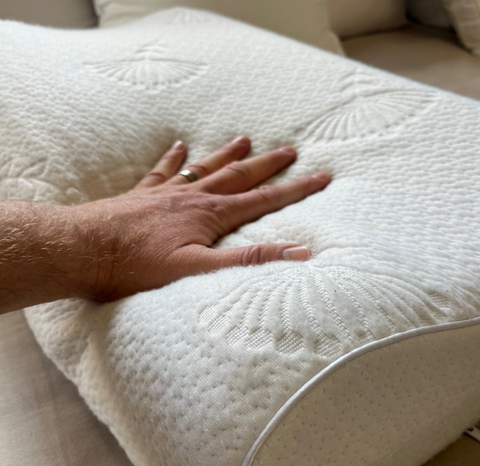
PILLOW FAQs - SLEEP POSITION
What is the best pillow for a Side Sleeper?
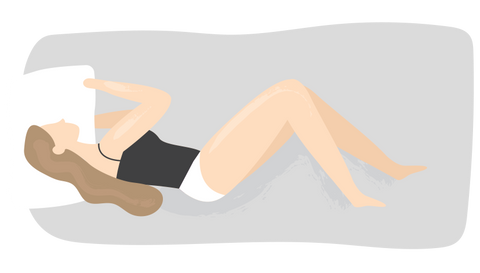
If you are a side sleeper we recommend a pillow that has a medium to high loft and firmness of medium to firm. Being a side sleeper means you need more support as your head is raised higher than other sleep positions.
Interestingly, most people are side sleepers.
The reason why the pillow height is so important is that it helps align your body, from your head and spine. Your mattress is equally important to providing a comfortable nights sleep and as a side sleeper you need to balance firmness and pressure relief.
A memory foam is a good choice. Or if you want a more affordable option you can choose multiple pillows including a quality poly with a medium to high loft.
Our top pillow picks for side sleepers are:
What is the best pillow for a Back Sleeper?
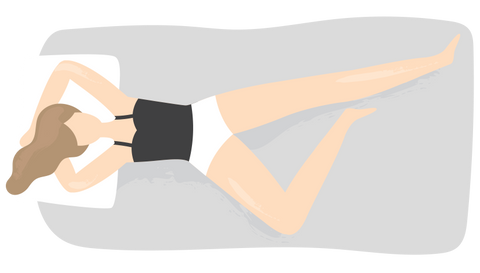
For back sleepers we recommend a pillow that has a lower profile and medium firmness. A pillow that is too high will cause your neck to be raised uncomfortably.
If you do change sleep positions during the night and consider yourself a combination sleeper then you probably want a pillow that sits in the middle, being a standard height and firmness.
What is the best pillow for a Combination Sleeper?
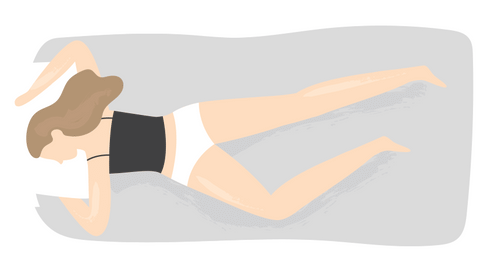
The best pillow for combination sleepers has a medium loft and medium firmness. We call it the sweet spot. If you toss and turn during the night you need a pillow that adapts to your sleep position and not have a pillow that is too high or too low. Firmness is important as this impacts the feel of the pillow in different positions. We recommend a poly filled pillow or a softer style memory foam. Having two pillows on hand is also common and helps with rotations during the night.
What is the best pillow for a Stomach Sleeper?
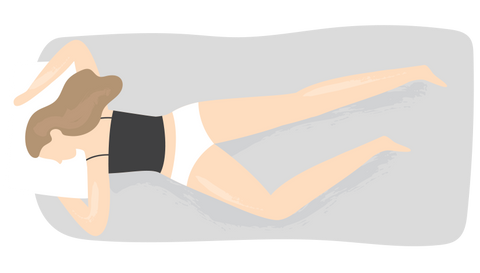
For stomach sleepers we recommend that you choose a softer style pillow that has a low profile. Because of the position you sleep you wont need a high pillow to align your neck. We recommend a low profile pillow with a material such as poly or down to give you the softness you need.
What is the best pillow for a Hot Sleeper?
The pillow material is key for Hot Sleepers. When you sleep for 7 to 8 hours a night then there will be a build up of heat. Air circulation and breathability will assist with limiting the heat retention. Surprisingly, some of the most expensive brands struggle to provide the same level of breathability as some more affordable brands. This is because of the material that some pillows use can be ultra comfy but still build up heat. A quality poly pillow can be a good option or if you do want a memory foam pillow choose one with cooling properties.
KEY TIP: Selecting a pillow is a personal preference so when shopping online we suggest looking at the description in detail and also the refund policy. Unfortunately, many retailers do not offer refunds. However, there are some who do provide a free +100 nights trial.
PILLOW MATERIAL
Pillows have evolved from being made from stone, to much more comfortable materials - the latest development being memory foam.
There are many types of pillow materials to choose from so we have prepared a table below to rank each. First, here is an overview of each type of material.
Polyester
Made from poly fibres, these are the most common pillows in the market. Mainly due to their soft feel and affordability. It is estimated that 40% of the Australian population use poly pillows.
- Pros: Affordable, Sleeps most sleepers, machine washable
- Cons: Durability, Not right for people wanting a firm pillow
Memory Foam
A material developed by NASA that is now one of the fastest growing pillow materials because of the unique spongy feel that contours the head.
- Pros: More durable, Pressure relieving with contour style pillow
- Cons: Can be expensive, Quality varies widely, Can't be machine washed (some provide a cover that may be washable), Heat retention can be a problem.
What does a memory foam pillow feel like? The springy feel give it a unique feel of being supportive and retaining its shape. They can vary in firmness so reach out to the retailer to grade the level of firmness. Most will be a medium firmness but it is the density that gives it a different feel.
Latex
Can be naturally sourced or man made. Described as having a springy feel that is softer than most memory foams.
- Pros: A softer bouncy feel with studies shown that a latex pillow is one of the best for relieving neck pain
- Cons: Can be expensive.
Feather
Made from goose feathers and down. Sleepers that prefer that luxury 'cloud' feel will enjoy these. However, they are not Vegan friendly and not suitable for people with allergies.
- Pros: Soft, cloud like feel. Generally they are plump so you can re-position the feather or down so the pillow adjusts to your sleep preference.
- Cons: Expensive, Some may not be ethically sourced, feathers can stick out and be uncomfortable.
Buckwheat
Another type of material and are considered eco-friendly. The pros include neck support and being able to adjust the filling to your preference. The downside is that they can be noisy and may cause allergies.
Pillow material rankings
To guide you further, we have provided rankings below, 0 represents the worst and 10 the best. Noted that there are ranges in quality across the industry so this is a general guide only to help you consider what material is right for you when purchasing a pillow.
Durability & Affordability
As a general rule, there is a trade off between price and durability. Pillow material that is more durable will be less affordable.
| Pillow Material | Afford-ability | Dur-ability |
| Polyester | 10 | 5 |
| Memory Foam | 3 | 9 |
| Latex | 3 | 10 |
| Down | 5 | 5 |
Feel & Breath-ability
Your body temperature plays an important role in getting a good nights sleep. The pillow material will impact air circulation and heat retention. Some foam pillows have designs that offer support but heat retention is a problem.
| Pillow Material | Feel | Breath-ability |
| Polyester | Soft | 7 |
| Memory Foam | Spongy | 5 |
| Latex | Springy | 4 |
| Down | Soft | 8 |
PILLOW FAQs
What is the best and worst performing pillow material?
A study conducted by Dr Susan Gordan in South Australia tested different types of pillows for 'bio-mechanical stresses on cervical structures whilst sleeping'. Pillow types ranged from Polyester, Latex, Feather, Memory Foam Contoured, and regular Foam. They tested participants in the study for stiffness, headaches, discomfort. The results were fascinating.
Let's start with the the worst performing type. Feather pillows ranked worst based on sleepers waking up the most and having symptoms including neck pain. What was the best pillow material? Latex came in at number one. The study found it performed the best at reducing headaches and other waking symptoms. Another fascinating finding was how good polyester performed. While it is cheaper than all other pillow types, it ranked alongside the more expensive memory foam (contour) for level of waking symptoms (headaches). Also, the findings showed that a memory foam contour pillow does not have any advantages over a standard shaped foam pillow.
What is the softest pillow?
A down pillow or polyester pillow are the softest pillows. If you are vegan we suggest looking for a down alternative pillow which is a type of poly.
What is the firmest pillow?
A dense foam pillow will provide the firmest support.
What is the cheapest pillow?
A poly pillow is generally the cheapest. The trade off is that the quality varies across poly pillows and some may only last 6 months.
What are the pillow sizes?
In Australia the pillow sizes are: Standard bedroom, King, Queen, European, Boomerang (V Shaped), Body pillows.
If you are fitting out your home we suggest standard pillows to sleep on with European pillows behind them to give your bed some style. If you have a king or super king mattress then the king pillow will complement the size of your mattress.
What does loft mean?
Loft refers to the height of the pillow. This is influenced by the amount of filling. More filling will mean it is a higher pillow. Generally, pillows come in three heights being High, Medium and Low.
You need to match your sleep position to the right loft so your neck and spine are aligned while you sleep.
Should I wash my pillow?
Firstly, to keep your sleep hygienic we recommend a pillow protector. A pillow protector acts as a cover over the pillow. You then should place a pillowcase as the final cover. A pillow protector will help stop your pillow absorbing sweat and moisture that leads to bacteria build up. Have you every seen a yellow stained pillow? Well a pillow protector can help prevent that stain occurring.
So can you wash a pillow? You need to keep your pillow clean so it is hygienic. Sleeping on the same pillow night after night is like wearing shoes every day.
Some pillows can be washed but some can not - so check the pillow tag for care instructions. Pillows should be washed to keep it hygienic and avoid that smell from old pillows. If you have allergies we recommend a pillow you can wash frequently like a Polyester and have a quality pillowcase.
How long will my pillow last?
As a general rule, 1 to 2 years. Unfortunately pillows won't last forever. They need to be replaced for hygiene reasons and to ensure that they provide the right support for you.
What should I do with old pillows?
Once your pillow reached it's end of life there are unfortunately not many options apart from landfill. However, in good news, #GoKindly has launched Australia's first pillow recycling program to help end pillow waste.
SUMMARY
A final tip is to know how to look for an Australian made pillow. Pillow retailers will often advertise pillows being Australian Made but how do you check for sure that it is made locally? Look for the Australian Made logo. This accreditation provides credibility that the pillows have been made locally to high standards. Also, retailers may state the Pillow is designed locally. While this may be true, the manufacturing is likely to be overseas.
We think it's a bonus if you can find a pillow that is right for you and it is made in Australia to get a quality nights sleep.

